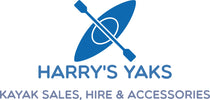How are kayaks made?
The kayak production process is quite interesting. All our kayaks are made by Kuer Group and the kayaks are roto-molded (rotationally molded). In this process, the finest linear, low density polyethylene powder (LLDPE) is poured into the kayak mold which is then put into a large oven and rotated until the powder has melted and formed the kayak. Once cooled, the kayak is fitted with accessories. The end product is a light-weight and very durable kayak with no seams.


All the kayaks are of a UV stablised polyethylene construction with a SCG - LL DPE kayak grade plastic, so quality of the plastic can be assured. All the paddles have an electrophoretic paint coating, so aluminium shaft colour is black instead of normal white. These coatings exhibit excellent salt spray and humidity resistance, high throwing power, good hardness and flexibility.
What does roto-molded mean?
The rotational molding process is a high-temperature, low pressure plastic forming process that uses heat and bi-axial rotation (i.e. rotation on two axes) to produce hollow, one-piece parts. The rotational molding process gives the kayaks and cooler boxes a one-piece construction which affords strength and durability.
Here's a corner view of the factory where our kayaks are made:
